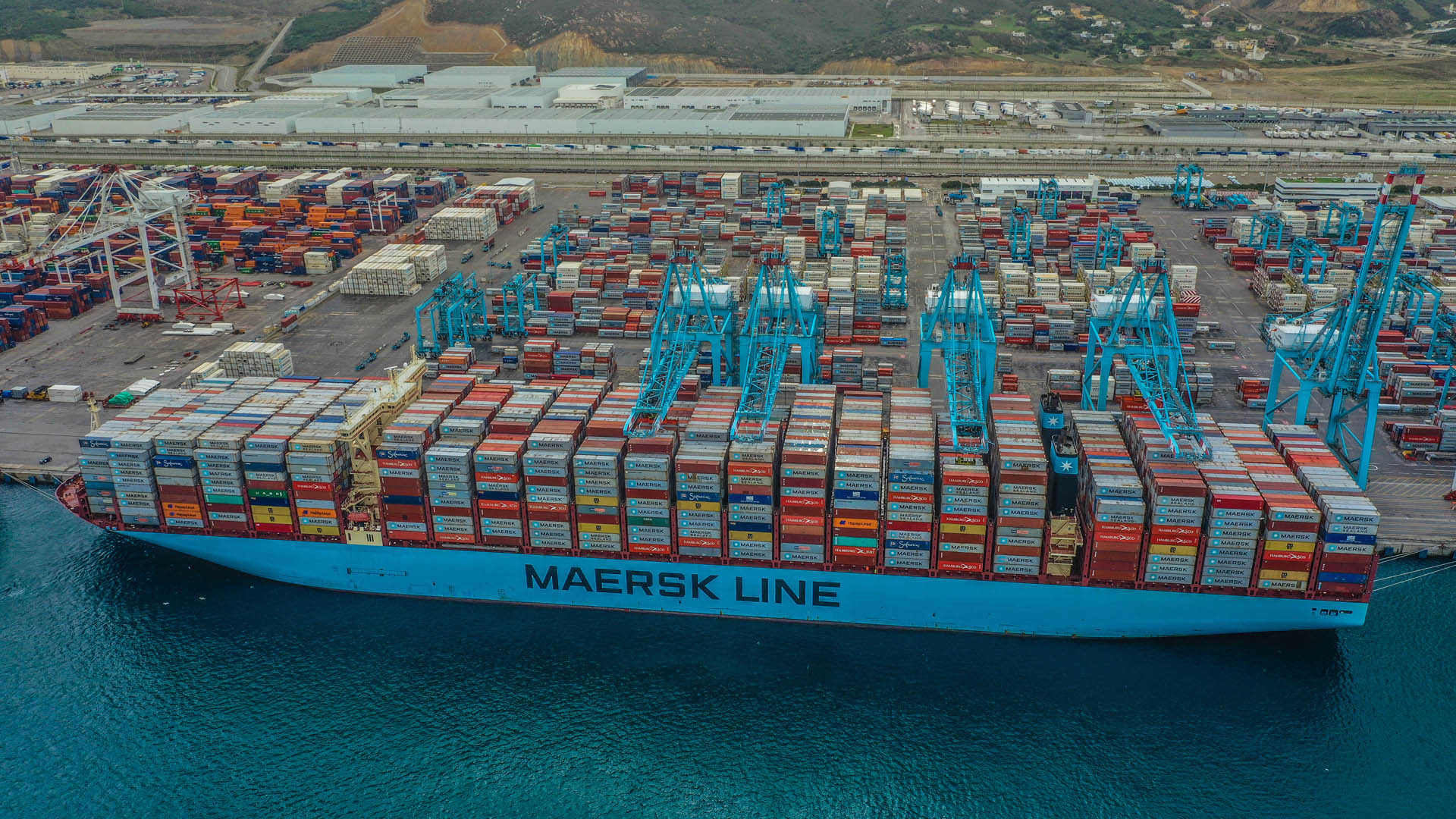Ocean shipping is indispensable to global trade, with nearly 90% of goods moving across the seas. International shipping accounts for 3% of all CO2 emissions. Reducing – and as soon as possible eliminating – these emissions is a priority for our industry. In 2021 Maersk’s direct (scope 1) CO2eq emissions amounted to 34 million tons. To reduce CO2 emissions and offer green transportation to customers, Maersk uses biodiesel and other drop-in biofuels in the fleet. However, these fuels are in short supply and not scalable.
We must innovate to find a solution. And we can do so also thanks to many of our customers who today are buying green shipping with the Maersk ECO Delivery product and who are keen to advance the green transition by creating a demand for green shipping.
Setting sail for the first carbon-neutral container vessels
How can we build and launch the first carbon-neutral container vessels? This question has been the focus of our innovation work over recent years. Working together with partners across the maritime ecosystem and beyond, from engine builders, fuel suppliers, equipment manufacturers, and classification societies to infrastructure developers, Maersk has analysed several fuel and technology options.
We identified green methanol as a solution where technology is ready and fuel production can be scaled up to have a significant impact before 2030. Until now, methanol as fuel for vessels had been used only for a few minor methanol carriers and other niches. The innovation work spans the entire value chain: from fuel supply development and sourcing to the infrastructure for transportation and storage at ports, as well as developing and building the first ocean-going container vessels that operate on green methanol.
This success was made possible by our coalition of partners’ achievement to develop first-of-a-kind projects to scale up green methanol production. This excellent collaboration between European companies helped reduce the technical risks for the methanol vessels and accelerated the innovation work.
The situation around green methanol vessels and production was a classic chicken-and-egg situation. Fuel project developers/producers needed guaranteed offtake to develop and finance production facilities, while shipowners need visibility and certainty of green fuel supply before ordering vessels. To break the stalemate, Maersk has ordered 19 green methanol vessels despite the green fuel (still) not being available in the amounts that these vessels will require. Given the projected higher cost of fuel, the vessels are designed for energy efficiency and prepared for future technologies like fuel cells.
Once all vessels are in operation, total methanol consumption will amount to about 0.75 million tons/year. By creating a certain demand for green methanol on the market, Maersk has been able to develop offtake partnerships with seven companies for projects globally. We also start to see traction as other shipping companies order methanol vessels, increasing demand for green methanol.
Big implications – and opportunities – ahead for our value chain
Another area of innovation is the methanol infrastructure for supplying fuel to the vessels. While some infrastructure for trading methanol as chemicals exists, global use of green methanol as fuel requires storage and supply infrastructure. We are in dialogue with major container ports to drive this forward. Here green corridor initiatives will play a central role.
Looking forward, electrolysers and fuel cells can become a golden opportunity for Europe. Much of the technology for green methanol that will see a massive upscaling is being developed by European companies. The fuel cell technology has the potential to unlock efficiency improvements of up to 50% compared to traditional engines, which will be a crucial improvement. Green fuel projects placing orders for electrolysers will generate a massive build-out of production facilities and supply chains to meet the demands of the market. In combination, these technologies represent the next tier of technology with the potential to act as a catalyst for the green transition. By seizing this opportunity, we can create valuable jobs and economic activity across Europe and deliver on the green transition.

Regulatory headwinds
We face several challenges in our innovation work, both when it comes to fuel sourcing and signing actual contracts:
Firstly, regulatory uncertainty discourages innovation. Project developers need bankable offtake agreements to make green fuel projects reality. However, the key provisions on the treatment of green fuels in EU legislation are incomplete which creates regulatory uncertainty. This concerns particularly the inclusion of shipping into the Emissions Trading System (ETS) and the delegated acts of the Renewable Energy Directive (RED) on Renewable Fuels of Non-Biological Origin. The uncertainty creates a regulatory risk for one or both parties.
Secondly, current permitting timelines can be very long because fuel projects are a new concept. Such delays are an additional obstacle to getting the first large-scale fuel projects off the ground.
Thirdly, the competitiveness gap between fossil and green fuels does not work in our favour. Fossil fuels are currently cheaper than green methanol (and other green fuels). The vast majority of green fuel projects need support to close the cost gap between green and fossil fuel options. Policy measures can help close the competitiveness gap by incentivising production and encouraging large-scale projects (see the US Inflation Reduction Act as a recent example). While we welcome the Act, as a European company we are concerned that – without any public sector efforts in Europe – green fuel projects in Europe will no longer be viable and that Europe will lose out on jobs and investments that the green transition can create.

